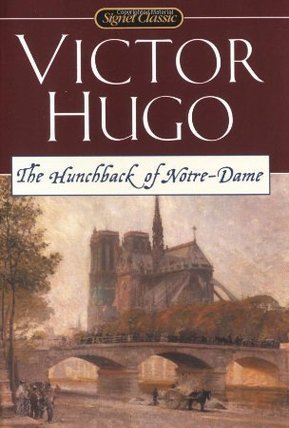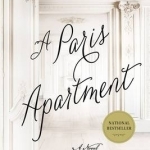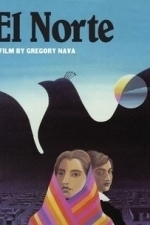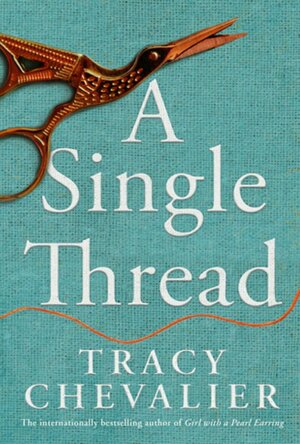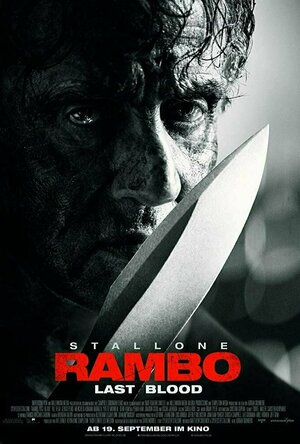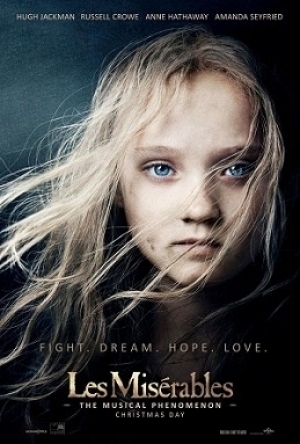Search
Search results
The Bandersnatch (199 KP) rated The Hunchback of Notre-Dame in Books
Nov 7, 2019
The Hunchback of Notre Dame is set in 1829's Paris, France where the gypsy Esmeralda (Born Agnes) captures the hearts of several men including captain Phoebus and Pierre Gringoire but especially Quasimodo the bell ringer and his guardian the Archdeacon Claude Frollo.
Frollo orders Quasimodo to bring Esmeralda to him and after a lot of chaos where the guards under Phoebus capture Quasimodo, Gringoire is knocked out and only rescued from hanging when Esmeralda saves him with promise of marriage and Quasimodo flogged and placed on a pillory for several hours of public exposure. When Esmeralda is accused of attempted murder Quasimodo helps by giving her space in the cathedral of Notre Dame under law of sanctuary. Frollo finds out that the court of parliament has voted the removal of Esmeralda's right for sanctuary and orders her to be taken and killed. Clopin the head of the gypsies hears this and leads a rescue party to help Esmeralda. During the chaos Quasimodo mistakes who is wanting to help the Gypsy he loves and ends up in aiding in her arrest. Frollo after failing to win her love betrays Esmeralda and sends her to be hung. Frollo laughs as Esmeralda dies and is pushed from the top of the Cathedral by Quasimodo. Quasimodo dies of starvation after joining Esmeralda's body in the cemetery.
Victor Hugo began writing the book in 1829The novels original title was Notre Dame de Paris, it was largely to make his contemporaries more aware of the value of the Gothic architecture, Notre Dame Cathedral had been in disrepair at the time and along with other buildings which were neglected and often destroyed to be replaced by new buildings or defaced by replacement of parts of buildings in a newer style. During the summer of 1830 Gosselin demanded that Hugo complete the book by February 1831, Hugo -starting in September 1830- worked non stop on the book finishing it six months later. Several ballets, comics, TV show, theatre, music, musical theatre and films have been inspired by The Hunchback of Notre Dame most notably has been the 1996 Walt Disney animated movie of the same name.
I think that The Hunchback of Notre Dame is a very prolific book which promotes the fact that it doesn't matter what you look like on the outside, its how you deal with people and what is on the inside that counts. The books portrayal of the romantic era as an extreme through the architecture, passion and religion as well as the exploration of determinism, revolution and social strife adds to the ultimately magical make up of the book. I believe that most people would see themselves in the position of Quasimodo, Esmeralda and Phoebus rather than that of Frollo. I know I certainly wouldn't see myself otherwise.
Victor Marie Hugo was born on February 26th 1802 in Besançon. eastern Franche-Combe as the third son of Joseph Leopold Sigisbert Hugo (1774-1828) and Sophie Trebuchet (1772-1821). Victor was a French poet, novelist and dramatist of the romantic movement, he's also considered one of the greatest and best known French writers. Victors childhood was a period of national political turmoil with Napoleon being proclaimed Emperor two years after he was born and the Bourbon monarchy was restored before his 13th birthday. His parents held vastly different political and religious views which prompted a brief separation in 1803, during that time Hugo's mother dominated his education and upbringing. Hugos work reflected her devotion to king and faith. However during the events leading up to France's 1848 revolution, Hugos work changed to that of Republicanism and free thought. Hugo went on to married to his childhood sweetheart Adele Foucher in 1822 and they had five children.
Victor Hugo's works hold a vast collection of poetry, novels and music. His first Novel Han D'Islande was published in 1823 and he published five volumes of poetry between 1829 and 1840 which cemented his reputation as a great elagiac and lyric poet. Hugos first mature work of fiction was published in February 1829 by Charles Gosselin without his name attached, this would infuse with his later work Le Dernier Jour d'un Condamne (The last day of a Condemned man) and go on to not only influence other writers including Charles Dickens and Albert Camus, and be a precursor to Hugo's work Les Miserables published in 1862.
After three attempts Hugo was finally elected to Academie francaise in 1841and in 1845 King Louis-Phillipe elevated him to the peerage and in 1848 he was elected to the national assembly of the second republic. When Louis Napoleon the 3rd seized power in 1851 Hugo openly declared him a traitor to France then relocated to Brussels, Jersey (where he was thrown out of for supporting a paper criticising Queen Victoria) and ending up in guernsey where he remained an exile until 1870. after returning to France a hero in 1870 Hugo spent the rest of his life writing and just living and died from pneumonia on may 22nd 1885 at the age of 83. He was given a state funeral by degree of president Jules Grevy, more than two million people joined his funeral procession in Paris which went form the Arc Du Triomphe to the Pantheon where he was consequently buried, he shared a crypt with Alexandre Dumas and Emile Zola. Most French towns and cities have streets named after him.
Victor Hugo in my opinion is one of those naturally born creative souls who had felt compelled to both write and at least try to make the world a better place. He definitely attempted to do so from the positions he accumulated in his life time and despite this the three mistresses he had in his later years definitely shows that his love life left something to be desired.
And there you have it a book for all the ages, its definitely under the banner of AWESOME!!!.
Frollo orders Quasimodo to bring Esmeralda to him and after a lot of chaos where the guards under Phoebus capture Quasimodo, Gringoire is knocked out and only rescued from hanging when Esmeralda saves him with promise of marriage and Quasimodo flogged and placed on a pillory for several hours of public exposure. When Esmeralda is accused of attempted murder Quasimodo helps by giving her space in the cathedral of Notre Dame under law of sanctuary. Frollo finds out that the court of parliament has voted the removal of Esmeralda's right for sanctuary and orders her to be taken and killed. Clopin the head of the gypsies hears this and leads a rescue party to help Esmeralda. During the chaos Quasimodo mistakes who is wanting to help the Gypsy he loves and ends up in aiding in her arrest. Frollo after failing to win her love betrays Esmeralda and sends her to be hung. Frollo laughs as Esmeralda dies and is pushed from the top of the Cathedral by Quasimodo. Quasimodo dies of starvation after joining Esmeralda's body in the cemetery.
Victor Hugo began writing the book in 1829The novels original title was Notre Dame de Paris, it was largely to make his contemporaries more aware of the value of the Gothic architecture, Notre Dame Cathedral had been in disrepair at the time and along with other buildings which were neglected and often destroyed to be replaced by new buildings or defaced by replacement of parts of buildings in a newer style. During the summer of 1830 Gosselin demanded that Hugo complete the book by February 1831, Hugo -starting in September 1830- worked non stop on the book finishing it six months later. Several ballets, comics, TV show, theatre, music, musical theatre and films have been inspired by The Hunchback of Notre Dame most notably has been the 1996 Walt Disney animated movie of the same name.
I think that The Hunchback of Notre Dame is a very prolific book which promotes the fact that it doesn't matter what you look like on the outside, its how you deal with people and what is on the inside that counts. The books portrayal of the romantic era as an extreme through the architecture, passion and religion as well as the exploration of determinism, revolution and social strife adds to the ultimately magical make up of the book. I believe that most people would see themselves in the position of Quasimodo, Esmeralda and Phoebus rather than that of Frollo. I know I certainly wouldn't see myself otherwise.
Victor Marie Hugo was born on February 26th 1802 in Besançon. eastern Franche-Combe as the third son of Joseph Leopold Sigisbert Hugo (1774-1828) and Sophie Trebuchet (1772-1821). Victor was a French poet, novelist and dramatist of the romantic movement, he's also considered one of the greatest and best known French writers. Victors childhood was a period of national political turmoil with Napoleon being proclaimed Emperor two years after he was born and the Bourbon monarchy was restored before his 13th birthday. His parents held vastly different political and religious views which prompted a brief separation in 1803, during that time Hugo's mother dominated his education and upbringing. Hugos work reflected her devotion to king and faith. However during the events leading up to France's 1848 revolution, Hugos work changed to that of Republicanism and free thought. Hugo went on to married to his childhood sweetheart Adele Foucher in 1822 and they had five children.
Victor Hugo's works hold a vast collection of poetry, novels and music. His first Novel Han D'Islande was published in 1823 and he published five volumes of poetry between 1829 and 1840 which cemented his reputation as a great elagiac and lyric poet. Hugos first mature work of fiction was published in February 1829 by Charles Gosselin without his name attached, this would infuse with his later work Le Dernier Jour d'un Condamne (The last day of a Condemned man) and go on to not only influence other writers including Charles Dickens and Albert Camus, and be a precursor to Hugo's work Les Miserables published in 1862.
After three attempts Hugo was finally elected to Academie francaise in 1841and in 1845 King Louis-Phillipe elevated him to the peerage and in 1848 he was elected to the national assembly of the second republic. When Louis Napoleon the 3rd seized power in 1851 Hugo openly declared him a traitor to France then relocated to Brussels, Jersey (where he was thrown out of for supporting a paper criticising Queen Victoria) and ending up in guernsey where he remained an exile until 1870. after returning to France a hero in 1870 Hugo spent the rest of his life writing and just living and died from pneumonia on may 22nd 1885 at the age of 83. He was given a state funeral by degree of president Jules Grevy, more than two million people joined his funeral procession in Paris which went form the Arc Du Triomphe to the Pantheon where he was consequently buried, he shared a crypt with Alexandre Dumas and Emile Zola. Most French towns and cities have streets named after him.
Victor Hugo in my opinion is one of those naturally born creative souls who had felt compelled to both write and at least try to make the world a better place. He definitely attempted to do so from the positions he accumulated in his life time and despite this the three mistresses he had in his later years definitely shows that his love life left something to be desired.
And there you have it a book for all the ages, its definitely under the banner of AWESOME!!!.
Nadya R (9 KP) rated A Paris Apartment in Books
Jul 2, 2018
At first sign I knew that I should read this book. The story is so familiar with "Sarah's key'story so I couldn't passed by. It's so easy to read and I didn't even realised when I turned over the half of the book. I had feeling that I know what is going to happen - Marthe is April's grand-grandmother, but I was wrong and this satisfied me, because I hate books with predictable ending. Although this feeling follow me through the hole book I really enjoyed it. This novel brings you to sunny Paris in Belle epoque mixed with XXI century routine. The best thing this book can offer is curiosity. It made me open Google and search for more information about Marthe, Giovanni Boldini, Victor Hugo and other characters from Beautiful epoch's high society.
Dana Calvo recommended El Norte (1984) in Movies (curated)
Charlie Cobra Reviews (1840 KP) rated Pet Sematary (2019) in Movies
Jul 7, 2020 (Updated Nov 1, 2020)
A Really Good Remake
Pet Semetary is a 2019 supernatural horror movie directed by Kevin Kolsch and Dennis Widmyer. The movie was written by Jeff Buhler with screen story by Matt Greenberg. It is a remake/reboot of the original 1989 film adaptation of the 1983 Stephen King novel. Starring Jason Clarke, Amy Seimetz, and John Lithgow.
Moving to the small town of Ludlow, Maine with his family: wife, Rachel (Amy Seimetz), children, Ellie (Jete Laurence) and Gage (Hugo & Lucas Lavoie), and Church, Ellie's cat, Louis Creed takes a job at the university's hospital. Ellie stumbles upon a procession of children, while exploring the nearby woods of their new home, who are taking a dead dog to a pet cemetery. Their neighbor, Jud Crandall (John Lithgow), finds Ellie climbing a large stack of branches forming a wall and warns Rachel and Ellie not to venture out alone as the woods can be dangerous.. The following day, Louis fails to save a student Victor Pascow (Obssa Ahmed) fatally injured from a car accident, and is left shaken. That night Louis meets Pascow in a vivid dream, where he is lead to the pet cemetery and warned not to "venture beyond". When Louis awakens he is disturbed to find his bed sheets and feet, muddy and dirty suggesting his "vision" could be more than just a bad dream.
As far as remakes go this one was really good. Especially for the horror genre. I mean I can't tell you how many remakes/reboots I've seen that just bomb and don't do the original justice. This one however seemed to keep the original in mind, while still making changes to keep it fresh and relatively different. That being said I do feel it was a bit over-hyped and didn't live up to certain expectations. To me it was a very creepy movie and had me wanting to cover my eyes in one part as memories from the original played back in my head. The sounds of the character Rachel's sister calling out to her got goosebumps on my forearms. Those parts were very unsettling to me but I didn't feel enough was "scary". I really enjoyed the twists and changes or differences from the original. They were welcome and kept it from being an exact replica and a copy of the original. As another critic stated, Jeffrey M. Anderson-Common Sense Media, the film was "...effectively unsettling, focusing on the characters and their understandable emotions rather than on overt gore and FX." I give it a 7/10.
Moving to the small town of Ludlow, Maine with his family: wife, Rachel (Amy Seimetz), children, Ellie (Jete Laurence) and Gage (Hugo & Lucas Lavoie), and Church, Ellie's cat, Louis Creed takes a job at the university's hospital. Ellie stumbles upon a procession of children, while exploring the nearby woods of their new home, who are taking a dead dog to a pet cemetery. Their neighbor, Jud Crandall (John Lithgow), finds Ellie climbing a large stack of branches forming a wall and warns Rachel and Ellie not to venture out alone as the woods can be dangerous.. The following day, Louis fails to save a student Victor Pascow (Obssa Ahmed) fatally injured from a car accident, and is left shaken. That night Louis meets Pascow in a vivid dream, where he is lead to the pet cemetery and warned not to "venture beyond". When Louis awakens he is disturbed to find his bed sheets and feet, muddy and dirty suggesting his "vision" could be more than just a bad dream.
As far as remakes go this one was really good. Especially for the horror genre. I mean I can't tell you how many remakes/reboots I've seen that just bomb and don't do the original justice. This one however seemed to keep the original in mind, while still making changes to keep it fresh and relatively different. That being said I do feel it was a bit over-hyped and didn't live up to certain expectations. To me it was a very creepy movie and had me wanting to cover my eyes in one part as memories from the original played back in my head. The sounds of the character Rachel's sister calling out to her got goosebumps on my forearms. Those parts were very unsettling to me but I didn't feel enough was "scary". I really enjoyed the twists and changes or differences from the original. They were welcome and kept it from being an exact replica and a copy of the original. As another critic stated, Jeffrey M. Anderson-Common Sense Media, the film was "...effectively unsettling, focusing on the characters and their understandable emotions rather than on overt gore and FX." I give it a 7/10.
Ivana A. | Diary of Difference (1171 KP) rated A Single Thread in Books
Feb 3, 2020
<a href="https://diaryofdifference.com/">Blog</a>; | <a href="https://www.facebook.com/diaryofdifference/">Facebook</a>; | <a href="https://twitter.com/DiaryDifference">Twitter</a>; | <a href="https://www.instagram.com/diaryofdifference/">Instagram</a>; | <a href="https://www.pinterest.co.uk/diaryofdifference/pins/">Pinterest</a>;
<img src="https://i1.wp.com/diaryofdifference.com/wp-content/uploads/2019/09/Book-Review-Banner-18.png?resize=1024%2C576&ssl=1"/>;
<i>When the team from LoveReading UK contacted me regarding A Single Thread, all I knew was that I loved Girl With A Pearl Earring by Tracy Chevalier and would therefore read any other book she writes.</i>
A Single Thread follows the life of Violet, during the year 1932, a few years after the First World War. Violet has lost her brother and fiance in the war and is still learning to cope. She is labelled as a ”surplus woman” by the society, a woman that in unlikely to marry.
With the grief, the society label and the suffocation of her mother, Violet starts a journey that will change her life.
She is determined to find where she belongs and who she truly is, in a time where being a woman and succeeding on your own was not praised by others.
Her journey starts with a long walk in a few towns, something she used to do with her late father and brother, and it continues with her learning canvas embroidery (today knows as needlepoint), and the beautiful art of bell ringing (which pleasantly reminded me of The Hunchback of Notre Dame by Victor Hugo, a book I read in high school and one I should re-read).
With Tracy’s writing, it is always so easy to lose yourself in the book and teleport to the past and re-live every scene as if you’re there. It is such a pleasurable experience.
I loved Violet, and I loved how she coped with all challenges of that era. Post First World War times were extremely hard, with too many men dying and too many women not being able to ever marry. Violet’s courage and hope kept moving her forward!
<b><i>This novel yells courage. It yells freedom. It yells independence. And standing along Violet, while she finds courage when you least expect to was a moment I will cherish.</i></b>
I recommend it to you, if you love novels in the war time period, or novels that talk about courage!
Thank you to the team at LoveReading UK, for sending me a copy of this book in exchange for my honest review.
<a href="https://diaryofdifference.com/">Blog</a>; | <a href="https://www.facebook.com/diaryofdifference/">Facebook</a>; | <a href="https://twitter.com/DiaryDifference">Twitter</a>; | <a href="https://www.instagram.com/diaryofdifference/">Instagram</a>; | <a href="https://www.pinterest.co.uk/diaryofdifference/pins/">Pinterest</a>;
<img src="https://i1.wp.com/diaryofdifference.com/wp-content/uploads/2019/09/Book-Review-Banner-18.png?resize=1024%2C576&ssl=1"/>;
<i>When the team from LoveReading UK contacted me regarding A Single Thread, all I knew was that I loved Girl With A Pearl Earring by Tracy Chevalier and would therefore read any other book she writes.</i>
A Single Thread follows the life of Violet, during the year 1932, a few years after the First World War. Violet has lost her brother and fiance in the war and is still learning to cope. She is labelled as a ”surplus woman” by the society, a woman that in unlikely to marry.
With the grief, the society label and the suffocation of her mother, Violet starts a journey that will change her life.
She is determined to find where she belongs and who she truly is, in a time where being a woman and succeeding on your own was not praised by others.
Her journey starts with a long walk in a few towns, something she used to do with her late father and brother, and it continues with her learning canvas embroidery (today knows as needlepoint), and the beautiful art of bell ringing (which pleasantly reminded me of The Hunchback of Notre Dame by Victor Hugo, a book I read in high school and one I should re-read).
With Tracy’s writing, it is always so easy to lose yourself in the book and teleport to the past and re-live every scene as if you’re there. It is such a pleasurable experience.
I loved Violet, and I loved how she coped with all challenges of that era. Post First World War times were extremely hard, with too many men dying and too many women not being able to ever marry. Violet’s courage and hope kept moving her forward!
<b><i>This novel yells courage. It yells freedom. It yells independence. And standing along Violet, while she finds courage when you least expect to was a moment I will cherish.</i></b>
I recommend it to you, if you love novels in the war time period, or novels that talk about courage!
Thank you to the team at LoveReading UK, for sending me a copy of this book in exchange for my honest review.
<a href="https://diaryofdifference.com/">Blog</a>; | <a href="https://www.facebook.com/diaryofdifference/">Facebook</a>; | <a href="https://twitter.com/DiaryDifference">Twitter</a>; | <a href="https://www.instagram.com/diaryofdifference/">Instagram</a>; | <a href="https://www.pinterest.co.uk/diaryofdifference/pins/">Pinterest</a>;
Darren (1599 KP) rated Rambo: Last Blood (2019) in Movies
Sep 26, 2019
Characters – John Rambo is the war veteran we all know, he has retired to a small ranch away from the world, where he has created a series of tunnels, he has helped raise Gabrielle and wants her to achieve what he couldn’t in life, with college in her future. When she goes missing, John turns the switch he keeps on the off button, becoming the soldier that will kill anybody in his way, dealing with the traumas of war and not caring about the consequences, he starts a war with the Mexican gang, one that he is prepared to end. Gabrielle is like a daughter to John, he help raise her with her love of horse riding helping their bond, she is ready for college, but the one question she wants more than anything is why her father left her, which sees her go against John’s request to Mexico in search for him. She gets drugged at forced into prostitution, with no way of escaping her captors. Victor and Hugo Martinez are running the operation, they use the girls up and sell them, they use the gang numbers to deal with any unwanted attention, including John and if a girl escapes, they will make them pay. They are pretty much routine Mexican villains though.
Performances – Sylvester Stallone is back in one of his favourite franchises, he does keep John looking a lot more like a true veteran that is still haunted by his nightmares of war, even if he is mumbling his way through the film. Yvette Monreal fills her role with ease, naïve young girl, while both Oscar Jaenada and Sergio Peris-Mencheta don’t put a foot wrong in the villainous roles.
Story – The story here follows a retired calm John Rambo that is called into action when his adoptive daughter gets taken by a gang in Mexico and he will go to any lengths to get his revenge at save her. When it comes to this style of action film, the story doesn’t need to be very deep at all, in fact the basic plot is broken down as war veteran takes on gang who took family member, lots of bodies left lying. We do get glimpses at the idea that John is still dealing with the traumas of his experiences in war, though they are very small, if we didn’t have these, we could have easily have had just another older military person doing the same thing, it didn’t need to be Rambo for the most part. Saying this, it was nice to see Rambo returning to what made his actions popular in the First Blood, with his stealth ability over the countless bullets flying around. This is everything you want and need from a Rambo movie when it comes to the story.
Action/Western – The action in the film does take it time to get going, but when Rambo starts, my word this is one of the most graphic action movies you will see, certain sequences will make John Wick’s kills look like a Disney movie.
Settings – The film does use the Mexico setting for the fish out of water when it comes to John wanting to take the fight to them, so he makes them bring to the fight to him, showing us how deadly he is when he knows the land. The settings are key to the final act of the movie.
Special Effects – The effects are brutal, when it comes to the injuries people were wincing in the cinema at certain moments, they don’t hold back in anyway.
Scene of the Movie – Whole final act.
That Moment That Annoyed Me – Certain stories don’t seem to get an ending.
Final Thoughts – This is one of the most violent action films that you will ever see, it uses the brutal action to highlight Rambo’s military skills and doesn’t hold back in anyway.
Overall: Graphic, Violent, Rambo’s Back.
Performances – Sylvester Stallone is back in one of his favourite franchises, he does keep John looking a lot more like a true veteran that is still haunted by his nightmares of war, even if he is mumbling his way through the film. Yvette Monreal fills her role with ease, naïve young girl, while both Oscar Jaenada and Sergio Peris-Mencheta don’t put a foot wrong in the villainous roles.
Story – The story here follows a retired calm John Rambo that is called into action when his adoptive daughter gets taken by a gang in Mexico and he will go to any lengths to get his revenge at save her. When it comes to this style of action film, the story doesn’t need to be very deep at all, in fact the basic plot is broken down as war veteran takes on gang who took family member, lots of bodies left lying. We do get glimpses at the idea that John is still dealing with the traumas of his experiences in war, though they are very small, if we didn’t have these, we could have easily have had just another older military person doing the same thing, it didn’t need to be Rambo for the most part. Saying this, it was nice to see Rambo returning to what made his actions popular in the First Blood, with his stealth ability over the countless bullets flying around. This is everything you want and need from a Rambo movie when it comes to the story.
Action/Western – The action in the film does take it time to get going, but when Rambo starts, my word this is one of the most graphic action movies you will see, certain sequences will make John Wick’s kills look like a Disney movie.
Settings – The film does use the Mexico setting for the fish out of water when it comes to John wanting to take the fight to them, so he makes them bring to the fight to him, showing us how deadly he is when he knows the land. The settings are key to the final act of the movie.
Special Effects – The effects are brutal, when it comes to the injuries people were wincing in the cinema at certain moments, they don’t hold back in anyway.
Scene of the Movie – Whole final act.
That Moment That Annoyed Me – Certain stories don’t seem to get an ending.
Final Thoughts – This is one of the most violent action films that you will ever see, it uses the brutal action to highlight Rambo’s military skills and doesn’t hold back in anyway.
Overall: Graphic, Violent, Rambo’s Back.
Gareth von Kallenbach (980 KP) rated Les Misérables (2012) in Movies
Aug 7, 2019
Words cannot express how amazing this movie is. For those of you who have shouldered through the modern-day musical revival; suffering through the questionable singing talents of many stars as “Phantom of the Opera,” “Chicago,” “Moulin Rouge,” “Sweeny Todd,” and that abysmal rendition of “Nine” – I can assure you, that “Les Mis” will change that perception. For once, the casting crew took the time to select a cast capable of the repertoire’s vocal demands (and Les Mis is very vocally demanding – as most operatic pieces are). It’s apparent that each singer was heavily vocally coached and trained, some faring more so than others. While this is no replacement for raw talent, I can assure you that the cast was downright fantastic.
For years I studied and sang opera. I know music and I’ve sung my fair share of Les Mis pieces in my past. I adore Victor Hugo and “Les Misérables” is by far one of my favorite literary works. When I began to watch this movie, I was keyed up to be critical on the vocal spectrum, the literary aspect, and the representation of one of my favorite Broadway/London pieces. To be frank, I wasn’t disappointed at all.
For those unfamiliar with Hugo’s work or what to expect with Les Mis, let me give you a brief synopsis on its plot and the history of the French revolution in which this takes place. France has just endured her infamous Revolution (the one with the guillotine, Marie-Antoinette, and the Sans Culottes movement) and her people are still suffering. There is no money for food, the country is in the midst of a depression, and the Napoleonic regime is yet to come to fruition. Thus, you find Fantine (Hathaway), a poor but determined (and beautiful) woman trying desperately to make enough money to support her daughter, Cosette, who resides with friends in another city. The book reveals that Madame Thénardier (Bonham-Carter) and her husband, Thénardier (Baron-Cohen) were supposed to be taking the money that Fantine had given to them to provide for her daughter, Cosette. Instead, however, Cosette is forced to live in absolute poverty while Thénardier’s daughter, Eponine, lives the life of opulence. Meanwhile, Jean Valjean (Jackman), an ex-convict, is trying desperately to find legitimate work after his stint in prison for stealing a loaf of bread to provide for his starving family. The infamous policeman, Javert (Crowe), feels Valjean will re-offend and makes it his mission to pursue Valjean until the end.
Finding the world a terrible place as an ex-convict, Valjean seeks to steal from a church her silver, believing he has no other way to survive. It is the love of a good priest, however, who gives Valjean the silver he seeks under the pledge he will become a servant of God and provide for others the same good he has provided for him. Thus, years later, we find Valjean a reformed man (who has skipped on his parole and assumed a new name), running a factory in which Fantine works. And so, when Fantine is fired from her job and takes to a life of prostitution in order to provide for her daughter, it is Valjean who feels the burden of her demise and takes it upon himself to save Cosette and raise her as his own.
Of course, this entire time, Javert is pursuing Valjean and a new revolution is starting to take place amongst Paris’ people. Years later we find Cosette grown to womanhood (now played by Seyfried), and falling in love with one of the revolution’s key players, a youth by the name of Marius (Redmayne). The Thénardiers are back again and we find their once-grand lifestyle has resorted to a life of gutter-crime and Éponine (now played by Barks), is desperately in love with Marius as well (although her love is unrequited). For those unfamiliar with how the story plays out, I will leave it at that.
I will caution those who have never seen this play to prepare for a long show. It is very dramatic and very intense, but visually breath-taking and emotionally moving in so many ways. Vocally, there are times when the legato is lacking and some transitions seemed forced (Crowe struggled many times with allowing his natural vibrato to come through instead of pushing a sustained note; Seyfried’s vibrato is very trill-like and sometimes distracts from the pure quality of her spinto-soprano range). However, I must say that I was blown away by Hathway’s performance (she brought me to tears with “I Dreamed a Dream” due to her emotional rendition) and her ability to truly escape into her character. Similarly, Tviet (he played Enjolras) was stunning with his vocal command and Redmayne was equally as impressive. Jackman will amaze you with his rich tenor and, surprisingly, I found Crowe to have a fantastic baritone when he didn’t force his work. Baron-Cohen and Bonham-Carter provided a much needed comical respite throughout the film (and both sing beautifully as well, although this movie didn’t focus on their vocal command as much). Barks did a lovely job for most of her work; although I found her rendition of “On My Own” a bit forced (she is a true mezzo but seemed to push her high notes, although this may have been where her voice shifted into her head voice which is no fault of her own).
Overall, if you are an avid musical lover and have been waiting for a proper rendition of this production, this movie will astound you. Visually, the movie is breath-taking and the acting is absolutely fantastic. I’m still haunted by the revolutionary song, to be honest. If you’ve been waiting for a musical worthy of the big screen, this one is it. Look for it to sweep the Oscars this year.
This movie deserves an A all around.
For years I studied and sang opera. I know music and I’ve sung my fair share of Les Mis pieces in my past. I adore Victor Hugo and “Les Misérables” is by far one of my favorite literary works. When I began to watch this movie, I was keyed up to be critical on the vocal spectrum, the literary aspect, and the representation of one of my favorite Broadway/London pieces. To be frank, I wasn’t disappointed at all.
For those unfamiliar with Hugo’s work or what to expect with Les Mis, let me give you a brief synopsis on its plot and the history of the French revolution in which this takes place. France has just endured her infamous Revolution (the one with the guillotine, Marie-Antoinette, and the Sans Culottes movement) and her people are still suffering. There is no money for food, the country is in the midst of a depression, and the Napoleonic regime is yet to come to fruition. Thus, you find Fantine (Hathaway), a poor but determined (and beautiful) woman trying desperately to make enough money to support her daughter, Cosette, who resides with friends in another city. The book reveals that Madame Thénardier (Bonham-Carter) and her husband, Thénardier (Baron-Cohen) were supposed to be taking the money that Fantine had given to them to provide for her daughter, Cosette. Instead, however, Cosette is forced to live in absolute poverty while Thénardier’s daughter, Eponine, lives the life of opulence. Meanwhile, Jean Valjean (Jackman), an ex-convict, is trying desperately to find legitimate work after his stint in prison for stealing a loaf of bread to provide for his starving family. The infamous policeman, Javert (Crowe), feels Valjean will re-offend and makes it his mission to pursue Valjean until the end.
Finding the world a terrible place as an ex-convict, Valjean seeks to steal from a church her silver, believing he has no other way to survive. It is the love of a good priest, however, who gives Valjean the silver he seeks under the pledge he will become a servant of God and provide for others the same good he has provided for him. Thus, years later, we find Valjean a reformed man (who has skipped on his parole and assumed a new name), running a factory in which Fantine works. And so, when Fantine is fired from her job and takes to a life of prostitution in order to provide for her daughter, it is Valjean who feels the burden of her demise and takes it upon himself to save Cosette and raise her as his own.
Of course, this entire time, Javert is pursuing Valjean and a new revolution is starting to take place amongst Paris’ people. Years later we find Cosette grown to womanhood (now played by Seyfried), and falling in love with one of the revolution’s key players, a youth by the name of Marius (Redmayne). The Thénardiers are back again and we find their once-grand lifestyle has resorted to a life of gutter-crime and Éponine (now played by Barks), is desperately in love with Marius as well (although her love is unrequited). For those unfamiliar with how the story plays out, I will leave it at that.
I will caution those who have never seen this play to prepare for a long show. It is very dramatic and very intense, but visually breath-taking and emotionally moving in so many ways. Vocally, there are times when the legato is lacking and some transitions seemed forced (Crowe struggled many times with allowing his natural vibrato to come through instead of pushing a sustained note; Seyfried’s vibrato is very trill-like and sometimes distracts from the pure quality of her spinto-soprano range). However, I must say that I was blown away by Hathway’s performance (she brought me to tears with “I Dreamed a Dream” due to her emotional rendition) and her ability to truly escape into her character. Similarly, Tviet (he played Enjolras) was stunning with his vocal command and Redmayne was equally as impressive. Jackman will amaze you with his rich tenor and, surprisingly, I found Crowe to have a fantastic baritone when he didn’t force his work. Baron-Cohen and Bonham-Carter provided a much needed comical respite throughout the film (and both sing beautifully as well, although this movie didn’t focus on their vocal command as much). Barks did a lovely job for most of her work; although I found her rendition of “On My Own” a bit forced (she is a true mezzo but seemed to push her high notes, although this may have been where her voice shifted into her head voice which is no fault of her own).
Overall, if you are an avid musical lover and have been waiting for a proper rendition of this production, this movie will astound you. Visually, the movie is breath-taking and the acting is absolutely fantastic. I’m still haunted by the revolutionary song, to be honest. If you’ve been waiting for a musical worthy of the big screen, this one is it. Look for it to sweep the Oscars this year.
This movie deserves an A all around.
